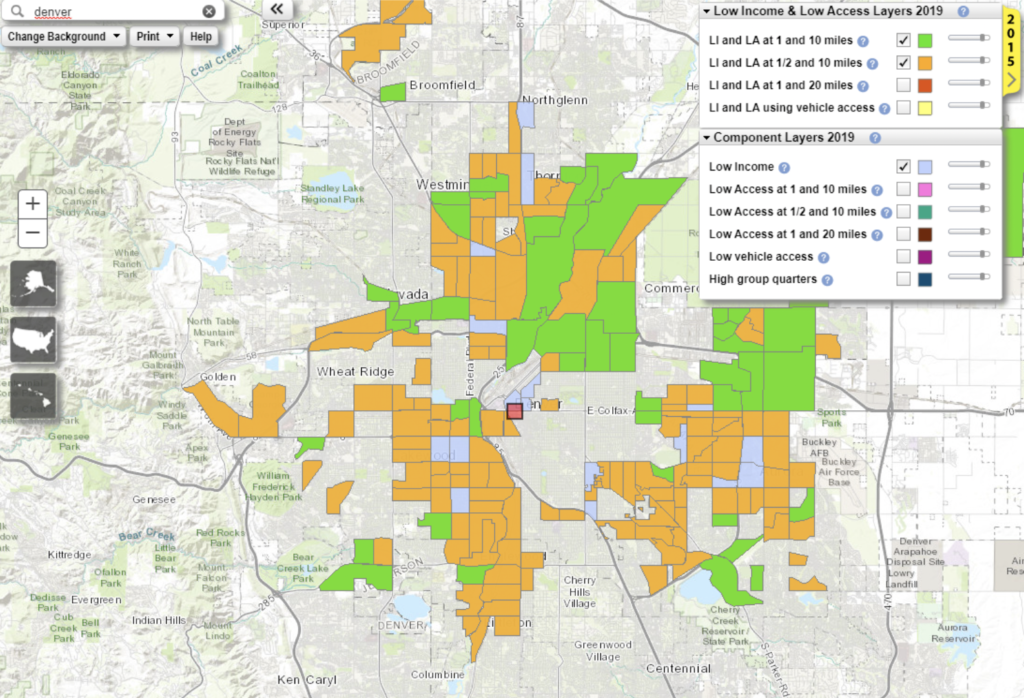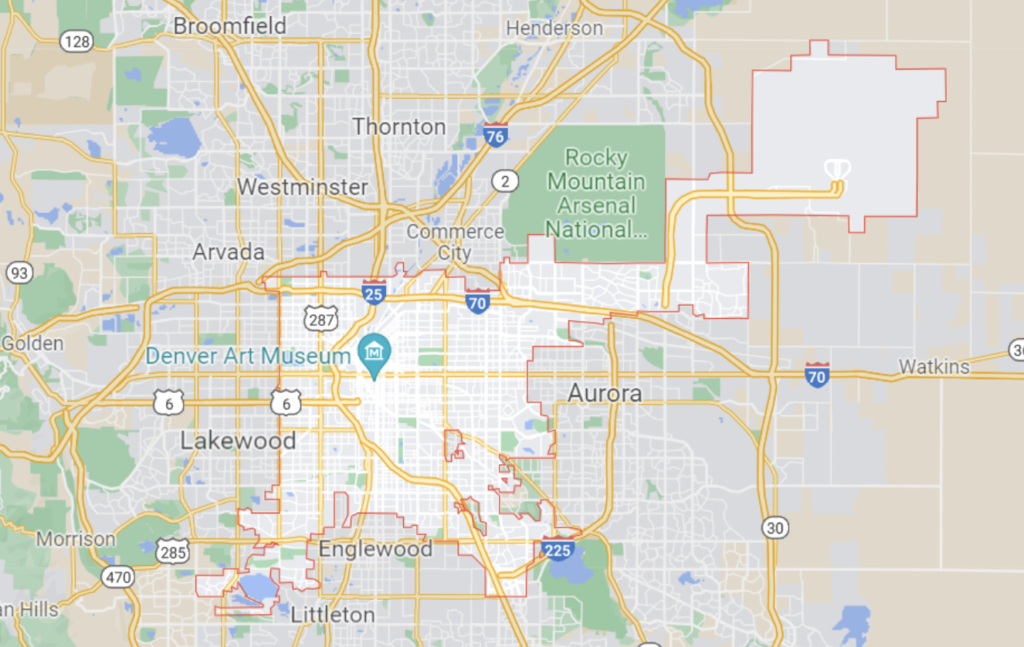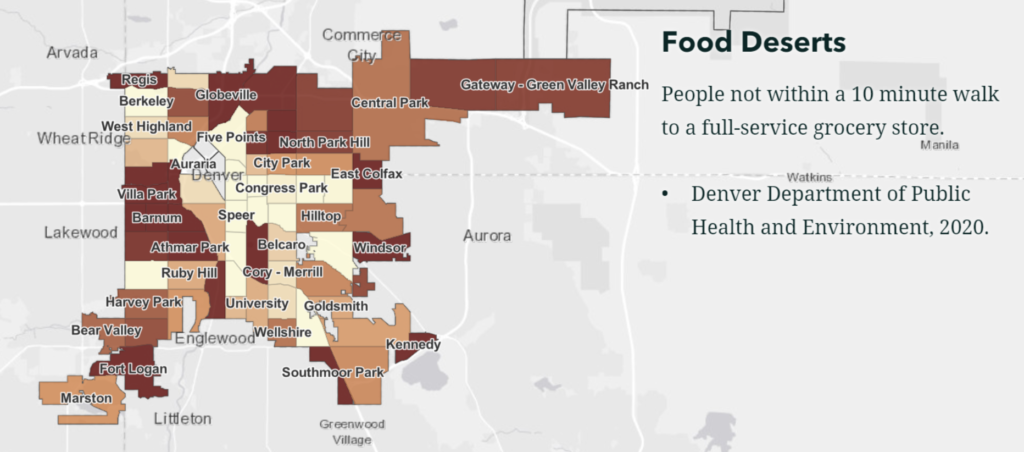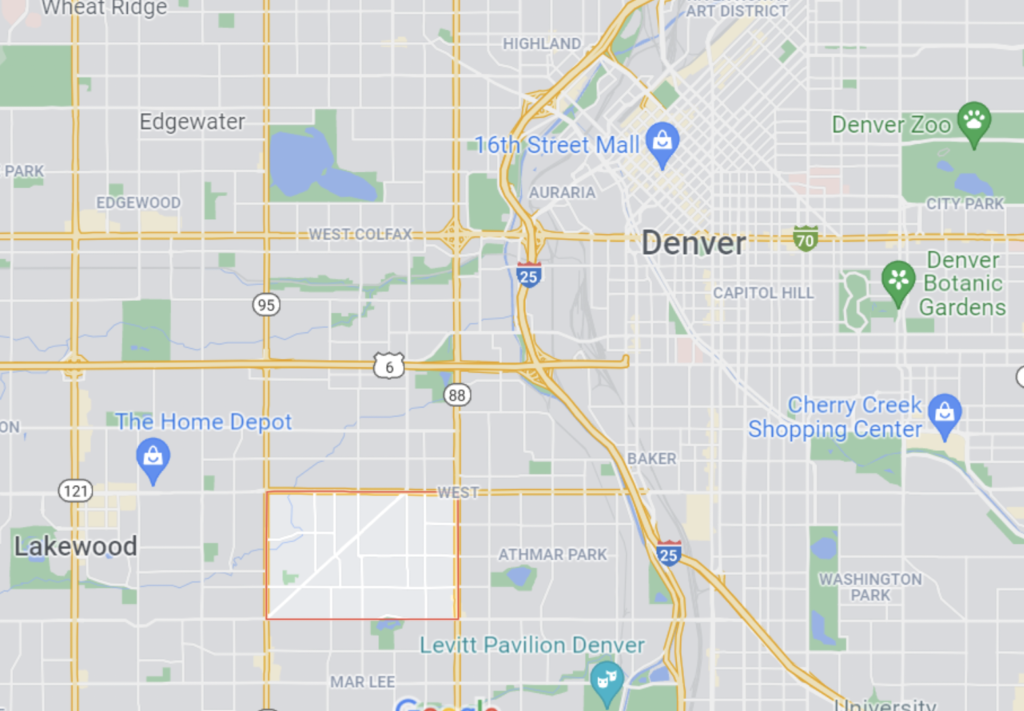What Is A Food Desert?
A food desert is a geographical area where it is difficult to buy healthy, nutritious food at an affordable price. Food deserts include areas where travel to a grocery store is difficult, and in areas where healthy food may be available, but at an unaffordable price.
While food deserts in Colorado are more common in rural areas, Denver has several areas that are also considered food deserts.
Learn more: What Are Food Deserts?
Fast Facts About Food Deserts in Colorado
- 12 percent of families in Colorado are considered food insecure.
- One in six children in Colorado is hungry on a daily basis.
- Children in low-income households in Colorado are three times more likely to be obese than in households that make more than $75,000 a year.
(Colorado Health Food Access Report)
Why Are There Food Deserts In Denver?
Food deserts are a socio-economic problem that tend to occur in specific neighborhoods as a result of a lack of proper aid and investment in that neighborhood.
Food deserts are found in Denver in neighborhoods with high poverty levels. These areas have lower access to transportation, making it more difficult to get to a grocery store.
Food deserts are also disproportionately found in areas where the residents have lower levels of education and high unemployment rates. Areas with food deserts also have high rates of abandoned or vacant buildings.
Food deserts are more likely to occur in primarily Black communities in Denver. A national 2014 study showed that even in areas of equal poverty, Black communities are less likely than communities of other races to have access to grocery stores and fresh food (Bower et al. 2014).
Where Are There Food Deserts In Denver?
Areas in Denver with low-income and low-access to stores, as well as low vehicle access are food deserts.
This map provides an overview of where food deserts are located in the city of Denver and surrounding areas. Any area showing orange or green is a food desert. All of these areas are low-income areas as well.


The map below provides a more zoomed-in view of food deserts in Denver. Areas shown in darker colors have a higher percentage of the population that lives farther than a ten minute walk from a grocery store.

As shown on this map, many consider areas in North Denver to be among the worst food deserts in the city.
Solutions
The first step in disrupting food deserts in Denver is researching where food deserts exist. For example, the Denver Department of Public Health and the Environment created the Denver Human Services Index in 2020 that maps food deserts, food stamp eligibility, and other demographics.
Once food deserts are identified, multiple collaborative solutions are needed to them.
Increasing the Number of Grocery Stores
Some efforts have focused on increasing the number of grocery stores within Denver. This would help make fresh foods more convenient to residents in food deserts that currently have to travel long distances to grocery stores.
For example, Colorado’s Supermarket Tax Credit for Underserved Areas Act aims to incentivize grocery stores to open in food deserts by offering a tax credit for selling fresh food.
Increasing the number of grocery stores in food deserts is just a start, as simply increasing grocery stores is not enough on its own. Even if healthy food is available at grocery stores, people in low-income areas may not be able to afford to buy it. Grocery stores in food deserts must accept federal food assistance programs like SNAP and WIC.
Solutions that focus on decreasing food prices or providing financial assistance must come hand in hand with increased grocery store numbers.
Increased Access To Vehicles And Other Public Transportation Systems
In addition to creating more healthy food options locally, increasing transportation options can help reduce food deserts.
One method to increase transportation to grocery stores is to build up better public transportation. This may include adding a bus stop or even creating a shuttle system within the neighborhood.
Additionally, Lyft ride sharing created the Grocery Access Program to discount the cost of rides to grocery stores. This program has been piloted successfully in Washington D.C. in 2019, and has expanded to several cities since then. A similar program in Denver’s food deserts would aid residents in accessing inconvenient grocery stores.
Urban Farming and Community Gardens
Urban farming and community gardens offer a community-based approach to making fresh produce available to Denver residents.
For example, Denver Urban Gardens (DUG) is a nonprofit that helps communities set up community gardens in their neighborhood. DUG offers aid in planning, designing, coordinating and building the gardens. They operate over 80 gardens in the greater Denver area, most of which are located in low-income neighborhoods.
Other Solutions
Other solutions that could help eliminate food deserts in the city of Denver include:
- Financial incentives and support for neighborhood-based grocery stores and farmers markets with discounted prices
- Increased financial assistance for residents of food deserts to buy food
- Increased public health education to encourage healthy eating
Some of these solutions are already being implemented.
Case Study: Westwood
Westwood is one of many neighborhoods in Denver. It’s located southwest of downtown Denver, close to Lakewood. Westwood is shown in the orange box below.
Westwood is considered a food desert. This is due to lower access to transportation, fewer grocery stores, and lower incomes. Between the 1990s and 2020, there were no grocery stores in Westwood.
Like other food deserts in Denver, Westwood follows many of the classic characteristics of where food deserts are most commonly found. Residents of Westwood have a lower income, lower education, and higher non-white population than the rest of Denver.
- The median household income in Westwood is $49,224 compared to $97,284 in the rest of Denver.
- Only 12.14% of Westwood residents have a college degree compared to 51.42% of Denver residents.
- 78.4% of Westwood residents are Latino, while only 22.3% of Denver’s population is Latino. Food deserts are more likely to occur in non-white communities.
- There is a slightly higher percentage of vacant homes in Westwood (5.75%) compared to vacant homes in Denver (4.76%). Food deserts often occur in areas with higher rates of vacant homes.
Many solutions have been suggested to increase Westwood residents’ access to healthy food.
The largest-scale solution is West Denver’s Re:Vision program that has a variety of smaller programs that all aim to address food deserts.
Re:Vision helps Denver residents build urban farming and community gardens. They also provide leadership training to residents that includes education on nutrition and garden building, and they work to increase job opportunities in Westwood. In 2019, Re:Vision’s gardens produced more than 65,000 pounds of local, organic produce.
In 2019, Re:Vision won a performance-based loan for $1.2million. With the loan, Re:Vision bought a build site in Westwood, the Westwood Food Co-op. The site plan includes a co-op grocery store, a cafe, a commissary kitchen, a food processing facility, and a 10,000 square foot greenhouse.
The Westwood Food Co-op is the first cooperative grocery store in Denver and is the first grocery store in Westwood since the last one closed in the 90s.
